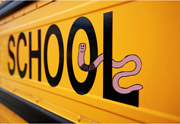Vermicomposting for Schools
go.ncsu.edu/readext?426885
en Español / em Português
El inglés es el idioma de control de esta página. En la medida en que haya algún conflicto entre la traducción al inglés y la traducción, el inglés prevalece.
Al hacer clic en el enlace de traducción se activa un servicio de traducción gratuito para convertir la página al español. Al igual que con cualquier traducción por Internet, la conversión no es sensible al contexto y puede que no traduzca el texto en su significado original. NC State Extension no garantiza la exactitud del texto traducido. Por favor, tenga en cuenta que algunas aplicaciones y/o servicios pueden no funcionar como se espera cuando se traducen.
Português
Inglês é o idioma de controle desta página. Na medida que haja algum conflito entre o texto original em Inglês e a tradução, o Inglês prevalece.
Ao clicar no link de tradução, um serviço gratuito de tradução será ativado para converter a página para o Português. Como em qualquer tradução pela internet, a conversão não é sensivel ao contexto e pode não ocorrer a tradução para o significado orginal. O serviço de Extensão da Carolina do Norte (NC State Extension) não garante a exatidão do texto traduzido. Por favor, observe que algumas funções ou serviços podem não funcionar como esperado após a tradução.
English
English is the controlling language of this page. To the extent there is any conflict between the English text and the translation, English controls.
Clicking on the translation link activates a free translation service to convert the page to Spanish. As with any Internet translation, the conversion is not context-sensitive and may not translate the text to its original meaning. NC State Extension does not guarantee the accuracy of the translated text. Please note that some applications and/or services may not function as expected when translated.
Collapse ▲ Worms bins are found in thousands of classrooms (ranging from kindergarten through high school) throughout North America. Having a worm bin in the classroom enables students to learn about organic decomposition, the soil food web, and the relationship between earthworms and ecological sustainability. Vermicomposting is the perfect fit for State requirements that students learn about habitats and ecosystems. Students can learn a variety of subjects using a classroom worm bin, including science, history, math, language arts, music, geography, and social studies.
Worms bins are found in thousands of classrooms (ranging from kindergarten through high school) throughout North America. Having a worm bin in the classroom enables students to learn about organic decomposition, the soil food web, and the relationship between earthworms and ecological sustainability. Vermicomposting is the perfect fit for State requirements that students learn about habitats and ecosystems. Students can learn a variety of subjects using a classroom worm bin, including science, history, math, language arts, music, geography, and social studies.
Video: How to Set Up a Worm Bin
Publications & Resources
- Earthworm Composting – Southern Region 4-H Wildlife Curriculum Committee
- Vermicomposting & Earthworm Q & A (Rhonda Sherman, Vermicomposting News – 2013). Simple questions and answers about vermicomposting and earthworms.
- Vermicomposting Curricula Book list for educators.
- Vermicomposting Leader’s Guide: A School Enrichment Curriculum (Sherman, R., Liverman, R., and Maxa, E.). March 2020. NC State Extension. E08-50326 4H-16-14PW. 31p. Six chapters on vermicomposting can be used by teachers, extension agents, and youth group leaders.
- Worm Bin Troubleshooting (Rhonda Sherman, Vermicomposting News – 2009). Tips for taking care of your worm bin.
- Worms Can Recycle Your Garbage Sherman, R. 2017. NC State Extension. AG-473-18. 6 p. How to set up and maintain a worm bin in your home or office to compost food scraps.
- Vermicomposting in Childcare Center Gardens Sherman, R. 2020. NC State Extension. LS-007-08. 4 p.


